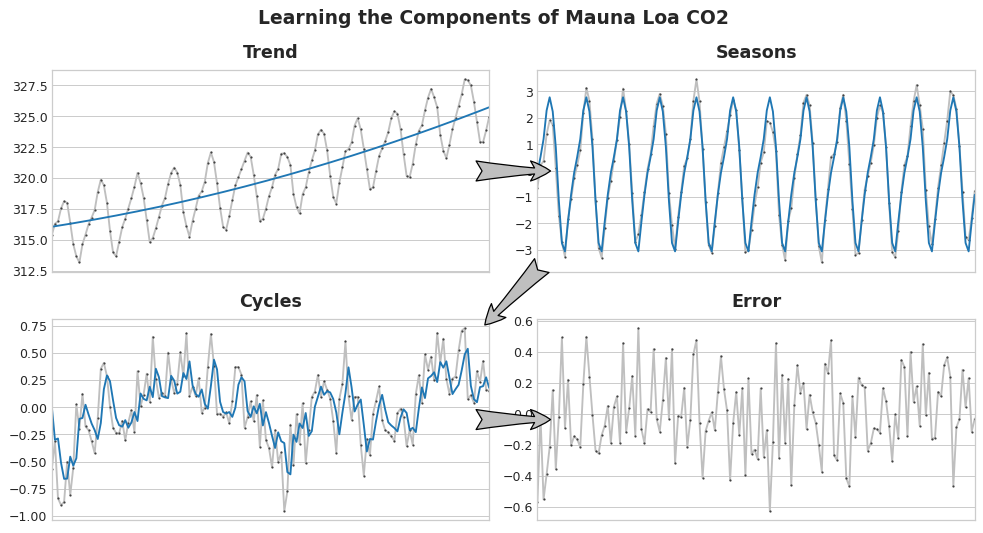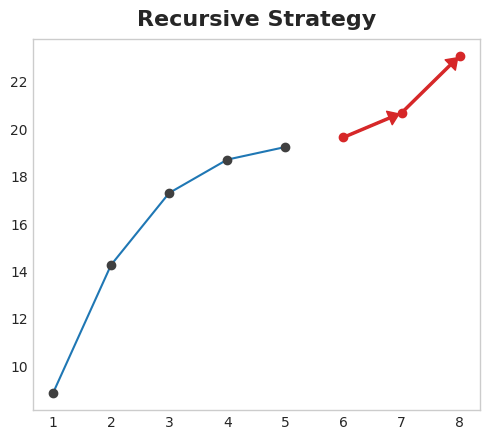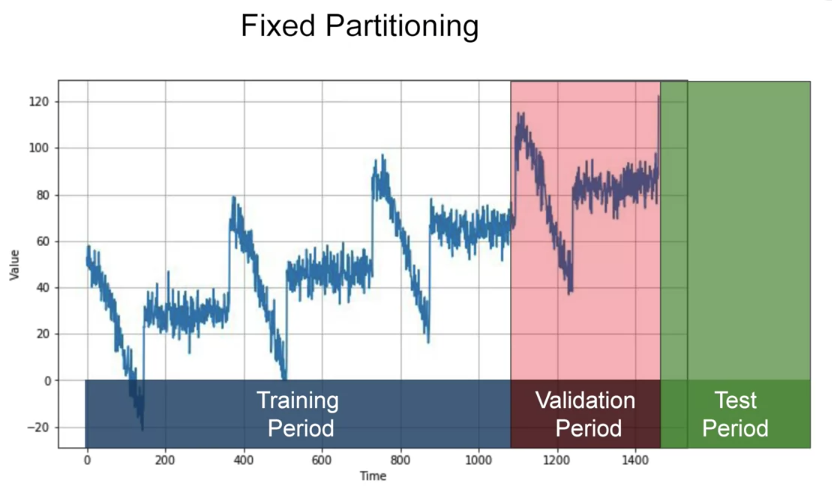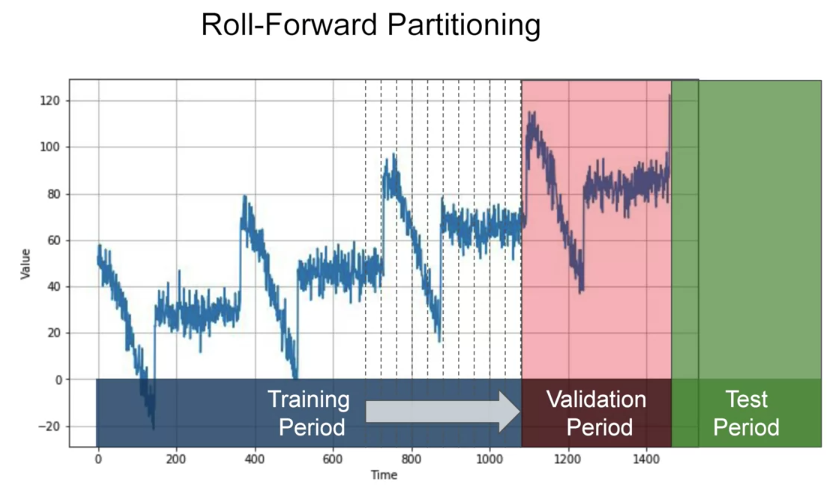Time Series
Features
There are two kinds of features unique to time series
- time-step features
- e.g. time dummy, which counts off time steps in the series from beginning to end.
- lag features
- e.g. n-step lag
Common Patterns
- trend (deterministic features)
- seasonality (deterministic features)
- can be visualized with Periodogram
- autocorrelation = the correlation a time series has with one of its lags
- noise
- non-stationary: the data will vary in accuracy at different time points
Components
- Many time series can be closely described by an additive model of just three components, trend, seasons, and cycles, plus some essentially unpredictable, entirely random error:
series = trend + seasons + cycles + error

``
Forecasting
Defining the Forecasting Task
- There are two things to establish before designing a forecasting model:
- what information is available at the time a forecast is made (features)
- the time period during which you require forecasted values (target)
- example: a three-step forecasting task with a two-step lead time using five lag features

corresponding preprocessed dataframe

Common Multistep Forecasting Strategies
- Multioutput model
- Use a model that produces multiple outputs naturally, with linear regression or neural networks, etc.

- Use a model that produces multiple outputs naturally, with linear regression or neural networks, etc.
- Direct strategy
- Train a separate model for each step in the horizon: one model forecasts 1-step ahead, another 2-steps ahead, and so on.

- Train a separate model for each step in the horizon: one model forecasts 1-step ahead, another 2-steps ahead, and so on.
- Recursive strategy
- Train a single one-step model and use its forecasts to update the lag features for the next step.

- Train a single one-step model and use its forecasts to update the lag features for the next step.
- DirRec strategy
- A combination of the direct and recursive strategies: train a model for each step and use forecasts from previous steps as new lag features.

- A combination of the direct and recursive strategies: train a model for each step and use forecasts from previous steps as new lag features.
Forecasting methods
We can choose methods depending on the time series patterns
- If the data exhibit stationarity properties
- use mean and covariance will be enough
- If there is no trend nor seasonality
- naive forecasting:
- the future values of a time series will be equal to the last observed value
- moving average:
- sums up a series of time steps and the average will be the prediction for the next time step
- naive forecasting:
- If there is trend and/or seasonality:
- differencing (+moving average):
- For example, if the seasonality period is 365 days, you will subtract the value at time t – 365 from the value at time t period and then use it to generate a moving average.
- smoothing (on top of differencing and moving average)
- to avoid noise in differencing data, you can smooth out past values before adding them back to the time differenced moving average. There are two ways to do this:
- Trailing windows - This refers to getting the mean of past values to smooth out the value at the current time step. For example, getting the average of
t=0tot=6to get the smoothed data point att=6. - Centered windows - This refers to getting the mean of past and future values to smooth out the value at the current time step. For example, getting the average of
t=0tot=6to get the smoothed data point att=3.
- Trailing windows - This refers to getting the mean of past values to smooth out the value at the current time step. For example, getting the average of
- exponential smoothing
- forecasts are equal to a weighted average of past observations and the corresponding weights decrease exponentially as we go back in time
- to avoid noise in differencing data, you can smooth out past values before adding them back to the time differenced moving average. There are two ways to do this:
- autoregression
- ARIMA (autoregressive integrated moving average)
- ARIMA models combine two approaches:
- AutoRegressive model: forecasts correspond to a linear combination of past values of the variable.
- Moving Average model: forecasts correspond to a linear combination of past forecast errors.
- Both model require the time series to be stationary, differencing (Integrating) the time series may be a necessary step, i.e. considering the time series of the differences instead of the original one.
- ARIMA models combine two approaches:
- SARIMA (Seasonal ARIMA)
- extends the ARIMA by adding a linear combination of seasonal past values and/or forecast errors.
- Prophet:
- a forecasting method developed by Facebook that uses a decomposable time series model with components for trend, seasonality, and holidays.
- Long Short Term Memory
- differencing (+moving average):
Partitioning in Time Series


Roll-forward partitioning: start with a short training period, and we gradually increase it, say by one day at a time, or by one week at a time. At each iteration, we train the model on a training period. And we use it to forecast the following day, or the following week, in the validation period.